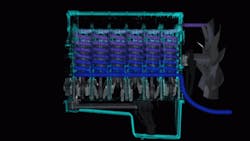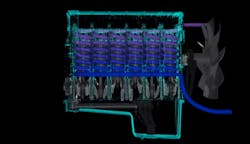n
n
n
All internal combustion engines in passenger cars, light trucks, heavy-duty trucks and equipment generate waste heat in addition to the energy that drives a vehicle. This waste heat is discharged in the exhaust, radiated from the engine or, most importantly, conveyed via the liquid coolant to a heat exchanger or radiator
n
n
n

